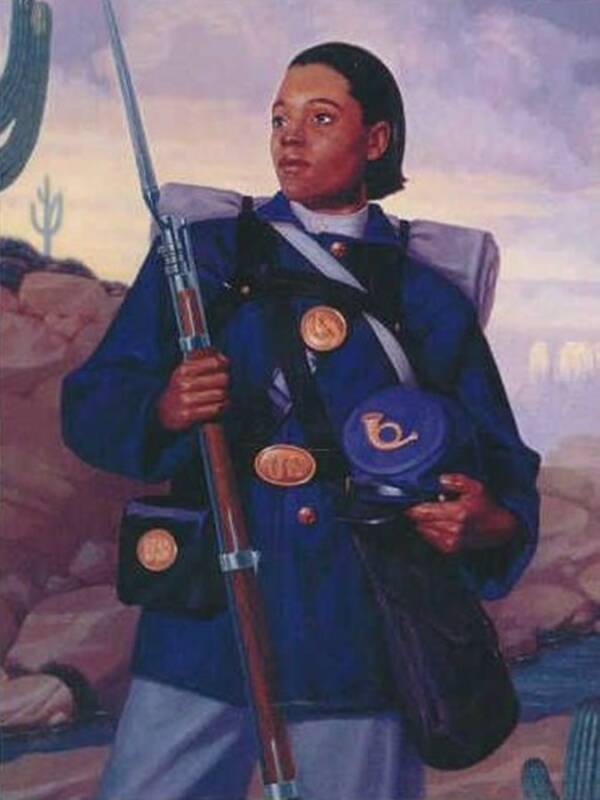Cathay Williams: The First African American Woman To Enlist In The Army And The Only Female Buffalo Soldier

Wikimedia CommonsCathay Williams disguised herself as a man to enlist in the army after the Civil War. She was the first Black woman to officially serve in the military.
Cathay Williams was born in Independence, Missouri, to a free man and a slave woman, which meant she shared her mother’s slave status. Growing up, she worked as a house slave on the Johnson plantation in Jefferson City, Missouri.
But the plantation was overtaken by Union troops in 1861. The slaves on the property were designated as “contraband” and forced to serve in supporting roles for the Union army. Williams, 17, supported the 8th Indiana Volunteer Infantry Regiment under Colonel William Plummer Benton as a cook.
She traveled with the unit as they journeyed through enemy territory in the American South for four years. She witnessed the Battle of Pea Ridge and looked on when rebel boats burned on Red River. When the war ended in 1865, Williams had made up her mind: she wanted to serve in the U.S. Army.
Of course, Black troops serving in the military were still a source of contention for the U.S. government, as Black men were seen as threats. It was unheard of for Black men to serve in the military during peace times — let alone a Black woman.
But Cathay Williams was determined. When the military opened up to Black recruits, she disguised herself as a man and enlisted under the false name of “John Williams” at St. Louis for a three-year engagement.
She was assigned to the 38th Infantry Regiment, one of six segregated, all-Black regiments created after the Civil War. She served for two years with the unit.
But her deployment was riddled with repeat hospitalizations which ultimately led to her true identity being uncovered by one of the surgeons who worked on her. Williams’ disguise was reported to the post commander and she was discharged from the army on Oct. 14, 1868.
Cathay Williams was undeterred and signed up with an emerging all-Black regiment that eventually became part of the legendary Buffalo Soldiers. After her discharge, she later moved between towns working odd jobs but eventually settled back in St. Louis.
Years later, rumors of her military service reached a local reporter who interviewed Williams about her stint in the army. Her story was published in The St. Louis Daily Times on Jan. 2, 1876.
Still, her contributions as a veteran went unacknowledged. Her injuries from her military service combined with her poor health led to repeat hospitalizations in her later life. She suffered from diabetes and neuralgia, had amputated toes, and used a crutch to walk.
Williams applied for disability pensions due to her service but was denied, and she died shortly after — possibly some time in 1893.
The reason for rejecting her pension is unclear. There had been precedent for granting a pension to female soldiers; Deborah Sampson and Anna Maria Lane, who both had disguised themselves as men to serve in the war for U.S. Independence, were granted military pensions.
The obvious difference was that Sampson and Lane were white, while Williams was Black.
Cathay Williams’ accomplishments and sacrifices as a soldier have been belatedly recognized in recent years. In 2016, a bronze bust memorial was dedicated to her at the Richard Allen Cultural Center & Museum in Leavenworth, Washington.
We can only hope she’s the first of many Black heroes to be given such a distinction.
Now that you’ve learned about nine remarkable Black war heroes of U.S. history, take a look at these 31 striking photographs from the World War I trenches. Then, discover the magic of the Harlem Renaissance through these 41 vintage images of New York.





